Mental disorders occur when specific ways of thinking, feeling, perceiving or behaving, and relating to others are a source of suffering for the patient, hindering his daily functioning. Brain abnormalities resulting from a disease process, injury, or damage can affect each aspect of everyone's life. Relationships with other people, activity, intellectual performance, and physical performance become difficult. Such disorders include ataxia.
Ataxia is a motor coordination issue when individuals struggle with exact movements, holding the correct posture, or having standard walking patterns. Ataxia can be due to varied reasons like inherited diseases, physical injuries, or combined illnesses. Ataxia typically stems from issues in the cerebellum or sensory conduction pathways that are buried deep. It's a movement disorder that comes on when structures in the brain, the spinal cord, or nerves in charge of balance, coordination, and muscle tone get harmed.
This brings about challenges in doing things like picking up items, walking, or common daily acts. Furthermore, ataxia in the cerebellum seriously causes problems with talking, moving the eyes, and swallowing food and drinks. Ataxia can come from birth or develop later in life. Ataxias are harsh diseases and spotting these is critical. An inborn ataxia condition is one that can't be cured. Yet, when ataxia occurs later in life, the treatment can differ based on the cause.
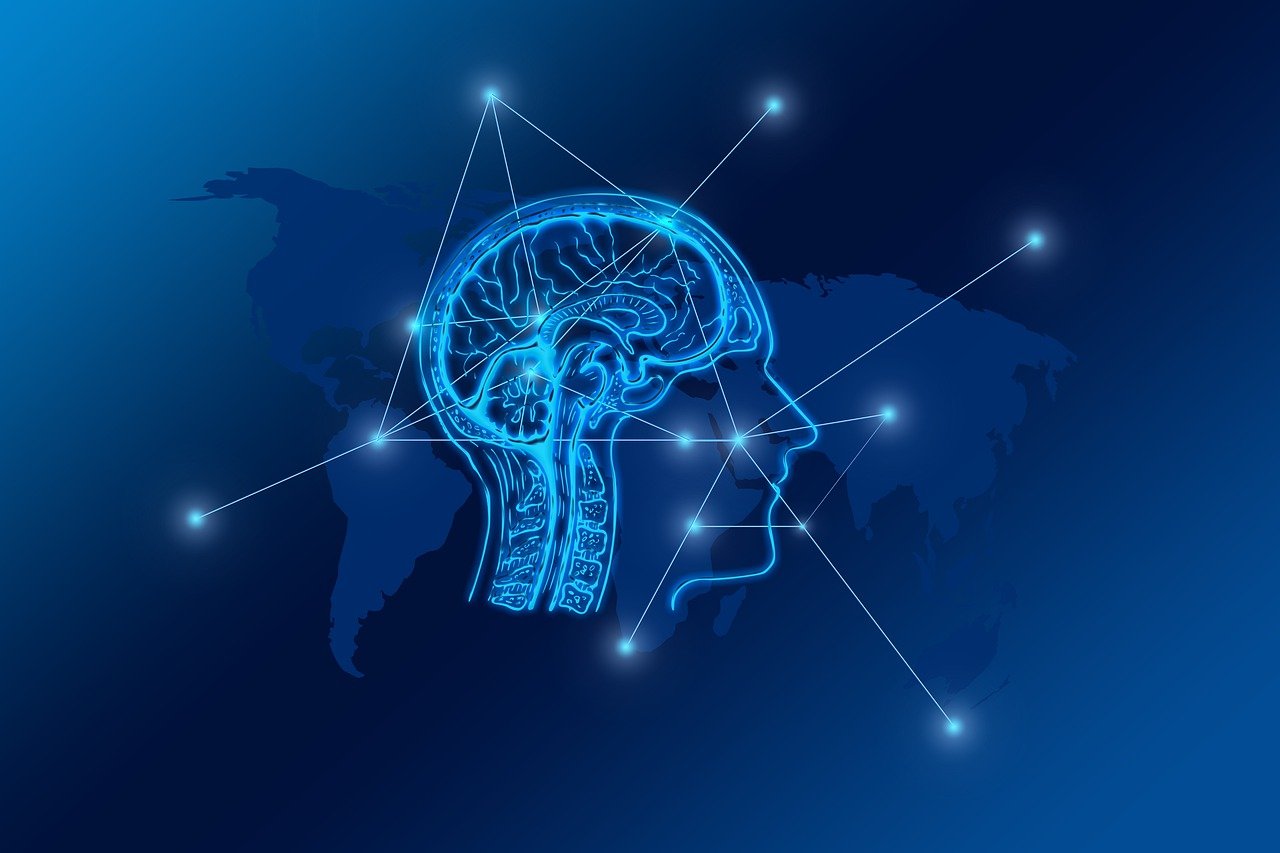
Based on the location of the damage, ataxia can be divided into cerebellar![]() and sensory
and sensory![]() . The former is associated with injury to the cerebellum, which, under physiological conditions, is responsible for the sense of balance and the clustering of movements. Sensory ataxia occurs when nerve signal conduction pathways are interrupted due to damage to the spinal cord. In addition to it, ataxia can be divided into:
. The former is associated with injury to the cerebellum, which, under physiological conditions, is responsible for the sense of balance and the clustering of movements. Sensory ataxia occurs when nerve signal conduction pathways are interrupted due to damage to the spinal cord. In addition to it, ataxia can be divided into:
Acquired Ataxia – The cause of acquired ataxia can most often be determined by medical history examination and imaging findings. Acquired ataxia is present because of damage to the nerves by external causes. Acquired ataxia can result from trauma, disease, drug or alcohol intoxication.
Congenital Ataxia – This type of ataxia may have a genetic basis. Scientific sources cite several possibilities for the condition to be transmitted. One can distinguish between autosomal recessively inherited ataxias and autosomal dominantly inherited ataxias.
Ataxia is a condition that results in challenges with conducting movements in a seamless and precise manner. This disrupts functions that require multiples muscles to work simultaneously. Patients are unable to perform some activities correctly. Damaging the body's movement-coordinating systems causes this issue. These systems include the cerebellum![]() and spinal cord
and spinal cord![]() .
.
Spinal cord – This component is a segment of the key nervous system. It transmits nerve signals from the brain to the outer system. Primarily, its purpose is the moving of nerve signals. It enables the completion of all movement tasks inside the spinal cord tracks. These paths relay information about the locations of different body parts from muscle sensors to the cerebellum.
Cerebellum – It's a part of our brain located in the hindbrain region. It takes charge of our balance, coordination, and motor skills. The cerebellum is thought to play a key role in processing certain memory types. Basically, it's a sort of information center. It gathers and analyzes data from our body, and then determines how to manifest this information in visible, tangible outcomes.Various organs of movement send information to the cerebellum. These include our muscles and skin. Specific brain areas and our spinal cord also send messages. The cerebellum gets information from the cerebral cortex too, where the decision to make a movement, like flapping your arms, originates.
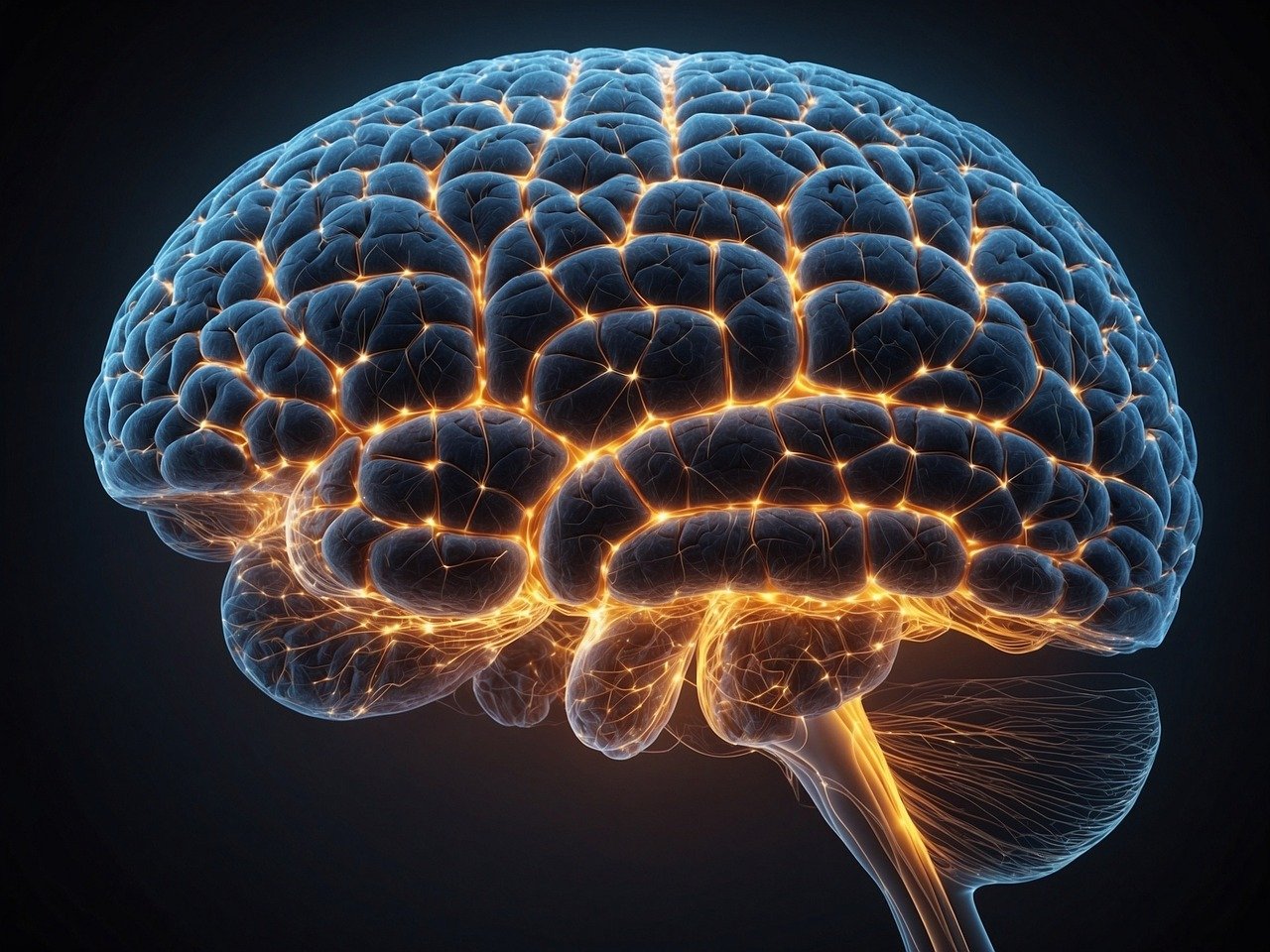
Various structures of the nervous system are responsible for the proper interaction of multiple muscle groups, so damage to even one of these elements can cause disorders in the appropriate doing of a complex movement and the appearance of ataxia. Causes of ataxia can be divided according to the location of the damage in the nervous system. Injury to the cerebellum or spinal cord can be caused by the following:
Stroke – A stroke is a pressing medical emergency. It happens when blood can't reach the brain, causing parts of it to die off. This can result in serious issues like ataxia, when damage happens to the cerebellum or the spinal cord. The main thing that typically causes strokes is problems that lead to blood clots in the heart.
Tumor – A brain tumor is a growth in the brain's core system. It could be original or sometimes due to spread from other body parts. Over time, it might not show any signs. Usually, trouble comes from pushing against tissues or involving key structures. Brain tumors and spreads can result in unsteadiness.
Trauma – Often, traffic accidents, falls from high places, or beatings can cause head injuries. This happens not just from force to the head, but mostly from harsh movements that can hurt brain parts. When the brain or spinal cord gets damaged, a condition called ataxia can develop.
Alcohol abuse – Alcoholism is a constant, advancing problem linked to too much drinking. It can turn into a habit that's hard to break. Alcohol poisoning is very dangerous. It happens when you drink too much alcoholic liquid or alcohol which is not for food. The major risk is loosing motor control or ‘ataxia' from too much drinking. Chronic alcohol abusers are, therefore, particularly susceptible to neurodegeneration.
Drug poisoning – Drug poisoning occurs when drugs are given in a dose that is hazardous to health. The exact symptoms of drug poisoning vary depending on the type and amount taken. The risk of side effects is inherent in the use of all groups of drugs; adverse effects on the nervous system, however, are most characteristic of psychotropic medications and cytostatics. Ataxia is also a symptom of poisoning with c***********e, which is an antiepileptic drug.
Diseases – A variety of diseases can harm the spinal cord and cerebellum, or disrupt the routes that guide nerve signals to the cerebellum. This leads to missing details about the position of different body parts. Such diseases include cancers![]() , infections
, infections![]() , and even those caused by nutritional shortages. It is essential to note that ataxia is not always caused by illness or damage to the structures of the nervous system. Transient ataxia can also occur in the course of chemical poisoning, or ataxia can appear paroxysmatically in genetically determined metabolic disorders.
, and even those caused by nutritional shortages. It is essential to note that ataxia is not always caused by illness or damage to the structures of the nervous system. Transient ataxia can also occur in the course of chemical poisoning, or ataxia can appear paroxysmatically in genetically determined metabolic disorders.

In congenital ataxia, the cause is genetic. The causes of genetic diseases are varied. They can result from an abnormal structure, number of chromosomes, or gene mutations. Genetic disorders can be inherited by offspring; however, some are not passed on to the next generation. Types of congenital ataxia include:
For the disease to manifest itself, it is necessary to inherit two defective genes. Parents then have a 25 percent risk of passing on ataxia to their children. Ataxias inherited autosomal recessively usually have their onset in childhood or early adulthood. This type of ataxia includes Friedrich's ataxia![]() , isolated vitamin E deficiency ataxia
, isolated vitamin E deficiency ataxia![]() , ataxia-telangiectasia
, ataxia-telangiectasia![]() , ataxia with oculomotor apraxia
, ataxia with oculomotor apraxia![]() , Cayman ataxia, and spinal cerebellar ataxia.
, Cayman ataxia, and spinal cerebellar ataxia.
Friedrich's ataxia – It is the most common hereditary ataxia, manifesting as gait abnormality, clumsiness, sensory neuropathy, and eye movement abnormalities. The cause of the disorder is a mutation of the FXN gene, which encodes the frataxin protein. Friedreich's disease can manifest itself as early as childhood, with the afflictions worsening with age until the patient eventually becomes unable to move independently. Friedreich's ataxia is an incurable disease.
Ataxia with isolated vitamin E deficiency – A mutation in the gene that codes for the alpha-tocopherol design protein is the cause. Vitamin E deficiency is not due to poor intestinal absorption but, most often, to liver dysfunction. Vitamin E deficiency most often causes cerebellar ataxia. Diagnosis is based on physical examination, plasma vitamin E content, and exclusion of known causes of malabsorption. Treatment is based on lifelong administration of high doses of vitamin E, which should be taken daily. If treatment is implemented early, some symptoms may regress.
Caiman cerebellar ataxia – The ataxia is associated with a mutation in the ATCAY gene, located on chromosome 19. Caiman cerebellar ataxia is an autosomal recessive neurological disorder characterized by hypotonia from birth, variable psychomotor retardation, and cerebellar dysfunction, including nystagmus, intention tremor, dysarthria, atactic gait, and truncal ataxia. Although it was initially thought that the disorder was confined to an isolated region of Grand Cayman, one Pakistani family with the condition and ATCAY mutation has been reported, expanding the ethnic distribution.
Ataxia-telangiectasia – AT is the most common cause of recessive ataxia in children under five years old and is caused by mutations in the ATM gene located on chromosome 11. Clusters of blood vessels, or telangiectasias, usually appear on the whites of the eyes. In some children, telangiectasias do not appear at all. Telangiectasias make the eyes appear infected or bloodshot. The skin, especially the parts exposed to the sun, may present signs of premature aging. Light or dark spots may appear on the skin of the face, hands, and feet, characteristic of the skin of older people. In children, gray hair may also occur.
Ataxias with oculomotor apraxia – AOAs are the most common recessive ataxias beginning in childhood. They manifest with characteristic eye movement abnormalities. Characteristically, oculomotor abnormalities such as nystagmus, visual fixation instability, and apraxia are usually diagnosed several years later. Nystagmus is the involuntary, excessive movement of the eyeballs. They move quickly and uncontrollably: from side to side, up and down, rotationally or irregularly. With nystagmus, focusing the eye on the selected image is impossible. Depending on the character, they can result from mutations in the APTX gene or SETX.
Spinal cerebellar ataxia of infantile-onset – IOSCA caused by mutations in the POLG gene. It is ataxias of early onset with marked cerebellar atrophy. The characteristics of ataxia with onset in infancy are more severe. The disease begins before the age of 2. The rapidly progressive symptoms of cerebellar ataxia, hypotonia, and sensory neuropathy with the absence of reflexes are accompanied by optic nerve atrophy, ophthalmoplegia, deafness, epilepsy, and involuntary movements.
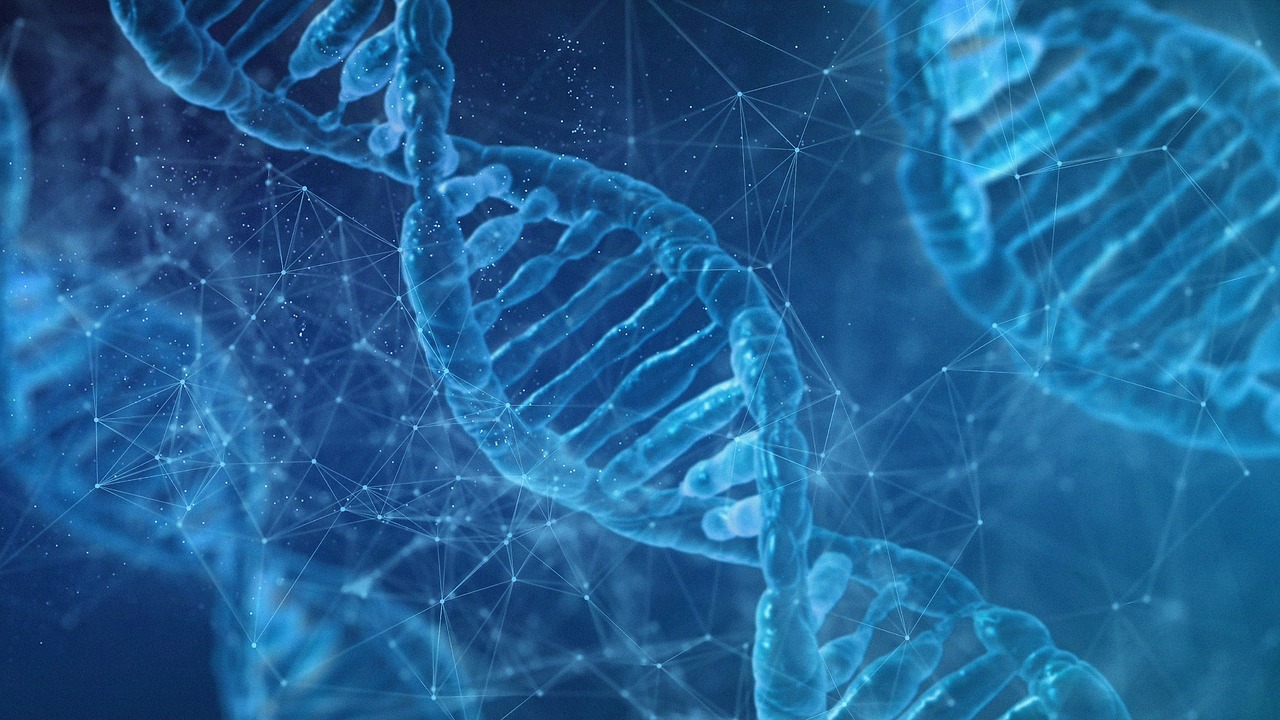
It only takes one defective gene, responsible for the development of the disease, for symptoms to appear. People with this type of ataxia have a 50%![]() possibility of passing it on to their children. The condition is inherited from one parent. As mentioned earlier, the cause of the disorders can be mutations in various genes. When inheriting in an autosomal recessive manner, parents often have no symptoms because they are heterozygotes for the mutation in question.
possibility of passing it on to their children. The condition is inherited from one parent. As mentioned earlier, the cause of the disorders can be mutations in various genes. When inheriting in an autosomal recessive manner, parents often have no symptoms because they are heterozygotes for the mutation in question.
In contrast, in the case of autosomal dominantly inherited ataxias, there are many reasons for the parents' lack of symptoms, such as incomplete penetrance of the disease anticipation, due to which the children's symptoms may occur earlier or be much more severe than those of the parents, earlier death of the parents or improperly established parentage. Depending on the course of the disease, autosomal dominantly inherited ataxias can be divided into progressive cerebellar spinal ataxias![]() and episodic ataxias
and episodic ataxias![]() .
.
Spinal-cerebellar ataxia – A group of genetically determined degenerative diseases of the central nervous system, inherited autosomal dominantly, in which the severity of the degenerative process is most significant in the cerebellum. The functionally related structures of the medulla, brainstem, and basal nuclei and the clinical picture are dominated by cerebellar symptoms, often accompanied by different neurological symptoms such as cognitive impairment.
Episodic ataxia – It is a rare group of autosomal dominantly inherited diseases that is of particular interest to researchers because of its molecular pathophysiology localizing to ion channels. Characteristic symptoms include accompanying cerebellar symptoms of dizziness, tinnitus, and double vision. Episodic ataxias manifest as short-lasting attacks of ataxia visible to the surroundings. Ataxia attacks are usually brief, lasting for seconds or minutes. Sometimes, ataxia attacks are accompanied by dizziness, nausea, or vomiting.
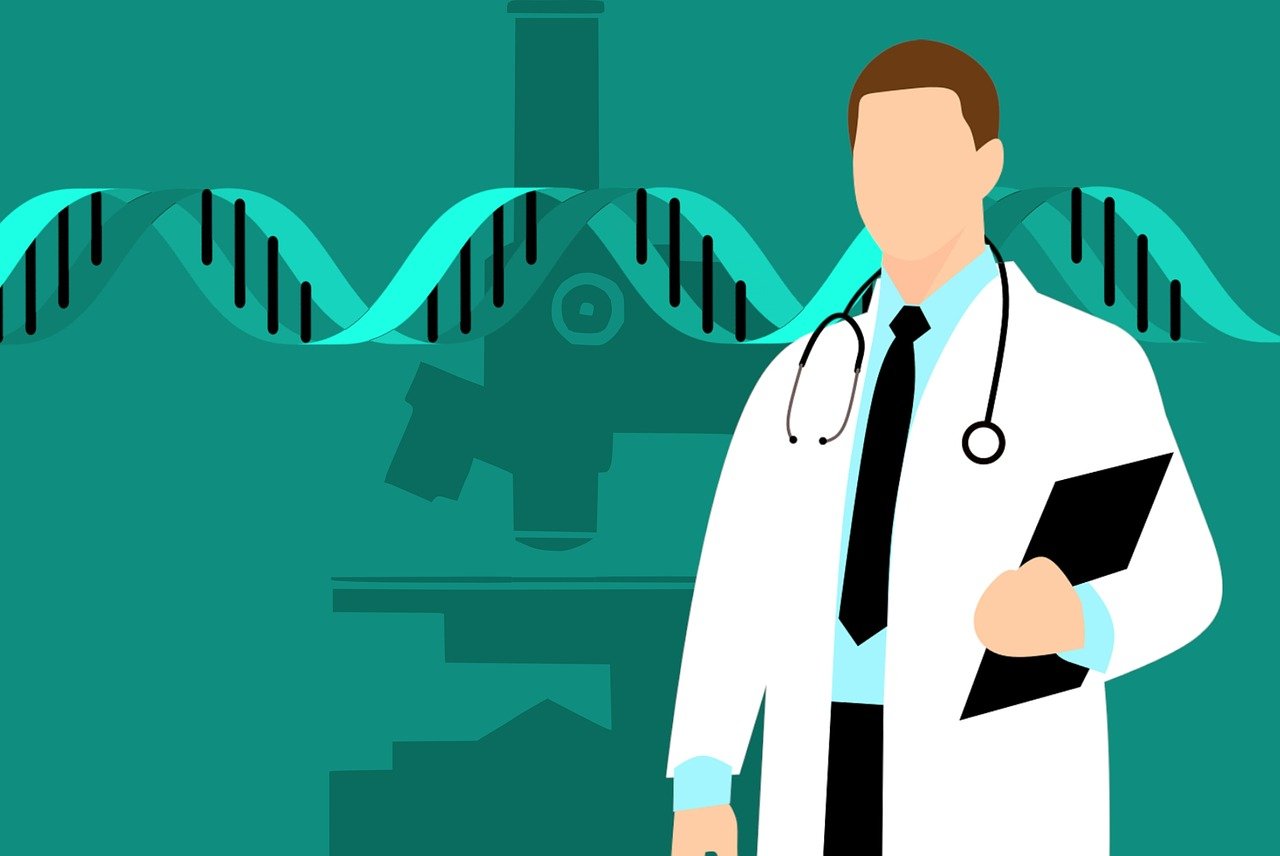
The initial symptoms of ataxia are nonspecific and are sometimes difficult to notice, even by the sufferer. Very often, ataxia goes unnoticed because its onset resembles ordinary clumsiness, which does not alarm the patient. Often, the presence of ataxia is made aware of by the patient only by the doctor during a neurological examination.
Usually, the first worrying symptoms for the patient are gait and balance disorders![]() , which make doing precise activities much more difficult. The symptoms of ataxia can depend on the location of the cerebellar lesions. Symptoms can be presented throughout the body or only in a part of the body, such as one side of the body. The most commonly noted are:
, which make doing precise activities much more difficult. The symptoms of ataxia can depend on the location of the cerebellar lesions. Symptoms can be presented throughout the body or only in a part of the body, such as one side of the body. The most commonly noted are:
Motor incompetence – Colloquially, the term may be called clumsiness. Motor incoordination is a disorder of motor coordination that makes it challenging to do movements smoothly and accurately. The condition manifests itself mainly in difficulties with planning and doing activities that fall under the scope of small and large motor skills. The disorder makes the patient's movements appear clumsy, too light or too intense, chaotic.
Movement disorders – People with ataxia manifest various types of movement problems. It mainly concerns gait. There is an inability to walk in a straight line and sway from side to side when walking. Loss of balance when standing up and walking makes it difficult to move normally. There may be significant gait disturbance due to a lack of leg coordination.
Postural disorders – In addition to gait disorders, postural disorders may also occur. Trunk instability is observed, whereby patients cannot maintain a stable posture. Postural defects are any deviation from normal posture involving hunching and bending. Persistent poor posture can lead to spinal curvatures.
Muscle spasms and tremors – Muscle spasms and tremors are also present in ataxia. Muscle spasms can be painful and occur episodically. In general, one notices markedly reduced muscle tone in the body. Tremors![]() , on the other hand, cause involuntary, non-rhythmic movements. This is why patients with ataxia have difficulty grasping a glass and drinking water from it. Once the vessel is captured, a tremor intensifies as the glass is brought closer to the mouth, followed by the spilling of the liquid. Patients with incompetence also encounter difficulty fastening and unfastening buttons.
, on the other hand, cause involuntary, non-rhythmic movements. This is why patients with ataxia have difficulty grasping a glass and drinking water from it. Once the vessel is captured, a tremor intensifies as the glass is brought closer to the mouth, followed by the spilling of the liquid. Patients with incompetence also encounter difficulty fastening and unfastening buttons.
Nystagmus – This symptom results in uncoordinated eye movement and stopping vision at one point. In simple terms, Nystagmus![]() means your eyes move on their own in a set pattern. It happens because of uneven tension in your eye muscles. Besides making your vision less sharp, it can also affect your balance and how you move around. Patients may try to position their heads in a way that will give them a better quality of vision, but this activity is unsuccessful.
means your eyes move on their own in a set pattern. It happens because of uneven tension in your eye muscles. Besides making your vision less sharp, it can also affect your balance and how you move around. Patients may try to position their heads in a way that will give them a better quality of vision, but this activity is unsuccessful.
Speech disorders – Ataxia can affect not only the muscles of the limbs and trunk but also the muscles of articulation, i.e., those responsible for making sounds, which can cause speech impairment in the patient. Speech could be more precise and can be challenging to hear. In ataxia, there is a symptom called dysarthria![]() or chanted speech. Scandalized speech is a characteristic way of speaking. It includes frequent pauses between syllables and words, a lack of speech fluency, an abnormal accent, and a slowing down speech. In addition, the patient divides words into syllables and tends to stutter at the beginning of a word or syllable.
or chanted speech. Scandalized speech is a characteristic way of speaking. It includes frequent pauses between syllables and words, a lack of speech fluency, an abnormal accent, and a slowing down speech. In addition, the patient divides words into syllables and tends to stutter at the beginning of a word or syllable.
Respiratory disorders – Respiratory issues involve changes in breathing speed, varying air absorption, inconsistent breath patterns, unusual chest movements, and alterations in usual breathing routine. Ataxia might cause either slower or faster breath rates. These breathing disruptions may lead to poor oxygen supply in the blood. It causes changes in the cardiovascular system, that is, changes in heart rate or blood pressure values. The consequence of it can be peripheral venous and lymphatic stasis.
Dysmetria – Occurring in ataxia. Dysmetria![]() is the abnormal judgment of distance and the inability to inhibit movement when the sufferer wants to do so. A patient with Dysmetria may also have trouble measuring the appropriate safe force and direction of movement when doing certain activities. For example, such a person may have problems when closing the mouth properly after yawning, thus causing the teeth to hit each other hard. Dysmetria is a medical condition that is sign of harm to the cerebellum or sensory input nerves. This relates to a strange motion's path and drastically affects a person's everyday life quality.
is the abnormal judgment of distance and the inability to inhibit movement when the sufferer wants to do so. A patient with Dysmetria may also have trouble measuring the appropriate safe force and direction of movement when doing certain activities. For example, such a person may have problems when closing the mouth properly after yawning, thus causing the teeth to hit each other hard. Dysmetria is a medical condition that is sign of harm to the cerebellum or sensory input nerves. This relates to a strange motion's path and drastically affects a person's everyday life quality.
Dysphagia – It explains a struggle in swallowing solids and fluids. Issues swallowing could result from improper esophagus or pharyngeal muscle functioning. If swallowing disorders are not recognized in time, they can cause serious consequences such as malnutrition, dehydration, and pharyngitis due to liquids and food entering the airways. Meals we prepare for a patient with swallowing difficulties should be soft-crumbled, consistent with a smooth mush to facilitate swallowing.

Ataxias are severe diseases, and their diagnosis is essential. You should see a doctor if you observe features that may indicate damage to the nervous system, such as difficulty walking, speaking, or doing everyday activities. At the outset, a thorough medical history of the symptoms is done. The following tests are recommended in the diagnosis:
Prenatal tests – Prenatal tests allow early detection of genetic and congenital disabilities in the fetus. They are divided into invasive and non-invasive. In most cases, prenatal diagnosis is based on non-invasive methods. Defects in genes critical to the development of ataxia can be detected at the prenatal testing stage![]() . Couples with a family history of ataxia can receive genetic counseling to determine their children's risk for the disease and extend the diagnosis to different family members.
. Couples with a family history of ataxia can receive genetic counseling to determine their children's risk for the disease and extend the diagnosis to different family members.
Genetic testing – Diagnosis of ataxia in children and adults uses modern genetic testing. These belong to such tests as next-generation sequencing![]() (NGS), among others. It is a group of methods that allow large-scale determination of the genome sequence, transcriptome, and epigenome study of protein-DNA interaction. These methods enable simultaneous sequencing of up to a million DNA fragments. NGS testing should be offered to patients for whom the genetic diagnosis performed so far has not yielded an answer. It is also possible to test specific genes by molecular biology methods if clinical symptoms indicate a particular type of ataxia.
(NGS), among others. It is a group of methods that allow large-scale determination of the genome sequence, transcriptome, and epigenome study of protein-DNA interaction. These methods enable simultaneous sequencing of up to a million DNA fragments. NGS testing should be offered to patients for whom the genetic diagnosis performed so far has not yielded an answer. It is also possible to test specific genes by molecular biology methods if clinical symptoms indicate a particular type of ataxia.
Neurological examinations – After a detailed interview with the patient, the neurologist performs a physical exam![]() , which includes checking the regularity of neurological reflexes, the patient's sensations, and the ability to perform specific movements. With special attention, the patient is instructed to tuse the index finger to touch the tip of the nose while the eyes are open and then closed and to feel the doctor's index fingers with the index fingers.
, which includes checking the regularity of neurological reflexes, the patient's sensations, and the ability to perform specific movements. With special attention, the patient is instructed to tuse the index finger to touch the tip of the nose while the eyes are open and then closed and to feel the doctor's index fingers with the index fingers.
When doing the above tests in ataxia, the patient's finger deviates from the thus-called ideal line of movement. The doctor might request the patient to quickly alternate movements with their arms, jot down a bit of text, and briefly stroll about the room. This helps to observe the patient's way of walking.
Blood count – After the neurological examination, depending on the results, the doctor may order several blood laboratory tests. It may be crucial to test vitamin E levels![]() ; its deficiencies may indicate an unusual type of ataxia. Also, cancers can cause ataxia, and with the use of new technology, it is possible to diagnose brain cancer from a blood sample. Examination of basic blood parameters is also essential in cases of stroke.
; its deficiencies may indicate an unusual type of ataxia. Also, cancers can cause ataxia, and with the use of new technology, it is possible to diagnose brain cancer from a blood sample. Examination of basic blood parameters is also essential in cases of stroke.
MRI – This is a scan needed when people think a stroke may have happened. It also helps to find out why someone gets headaches, checks for conditions that cause the brain to break down, finds epilepsy triggers, and deals with many issues affecting the brain and nerves. Head MRI provides correct images of the main nerve system's structures from different angles and sections. There's no pain or a need for surgery during this test. It creates detailed images of the inside of the head, like the larger part of the brain, rear brain, and the brainstem.
Computed tomography – CT is a test that makes use of X-rays. In this way, obtaining a precise and multilayered image of the brain and craniofacial region is possible. The examination is done not only for diagnostic purposes but also for monitoring the course of the disease and selecting the appropriate therapy, for example, in patients with brain cancer. Immediately after the CT scan, the patient should not experience any side effects, and the test is non-invasive and painless.

Congenital ataxia is a disease without a cure. Currently, no medicine effectively combats its symptoms. Some experimental studies hint at using stem cells to reduce the effects of damage to the brain region called the cerebellum and its linked areas.
In the case of acquired ataxia, the situation seems more straightforward. Usually, it is enough to stop the medications or toxins that may have caused the tremors and problems with cerebellar function. The case is different, where the symptoms are the result of an extensive stroke or tumor. Then, rehabilitation may be necessary.
Physiotherapy – Rehabilitation of ataxia patients is a long-term process. Physical therapy![]() is primarily essential in the treatment of ataxia. Maintaining an adequate range of muscle strength, motion in the joints, and training fluidity and agility are crucial. Physiotherapy should be tailored to the individual needs of the patient, making a therapy plan, adjusting the environment, and using the concept of neurophysiological methods.
is primarily essential in the treatment of ataxia. Maintaining an adequate range of muscle strength, motion in the joints, and training fluidity and agility are crucial. Physiotherapy should be tailored to the individual needs of the patient, making a therapy plan, adjusting the environment, and using the concept of neurophysiological methods.
Speech therapy – In addition it, the care of a neurologist may be necessary since the speech, swallowing and breathing disorders that occur require his intervention. It is essential with ataxia to divide tasks into stages and gradually combine them into longer sequences, forcing the patient to use new strategies to achieve further skills.
Therapy of ataxic disorders – In treating ataxic disorders, it is also widespread to use equipment and orthopedic supplies that help stabilize the trunk and reduce the observed tremors, walking on a broad base. Various types of trunk and limb dynamic suits and orthoses are often used for this goal.
Psychological care – Due to the chronic nature of the condition described, there is a very high risk of mental health problems. Therefore, psychological care is recommended for people with ataxia. Psychotherapy often helps achieve motivation for exercise and avoid declines in form caused by periods of deterioration.
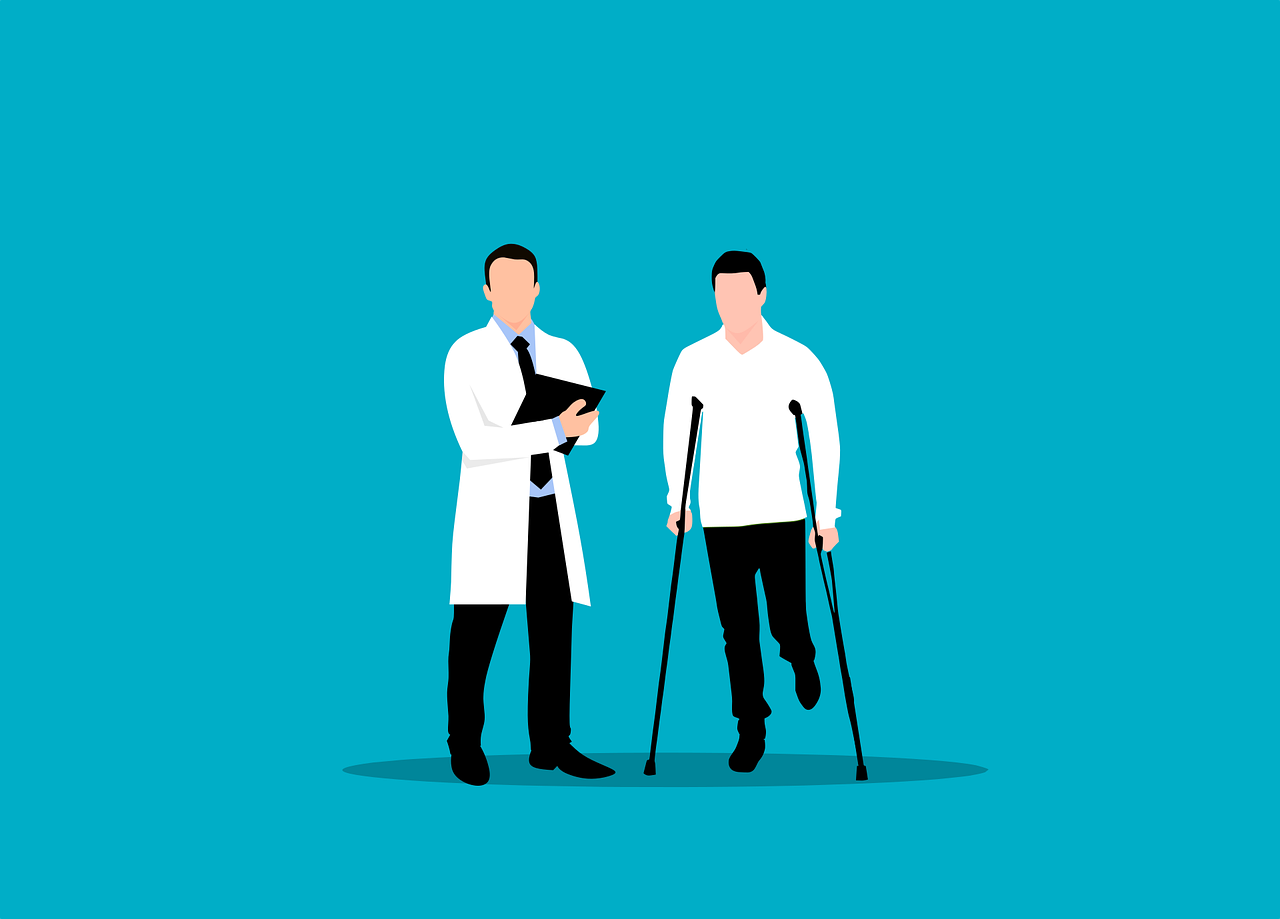
Where acquired ataxia is present, it is essential to determine the cause of the ataxia, which may be a disease![]() . Curing the underlying illness can make the ataxia symptoms go away on their own. Such diseases include:
. Curing the underlying illness can make the ataxia symptoms go away on their own. Such diseases include:
Viral cerebellitis – Acute cerebellitis is a childhood disease that can occur during or several weeks after an infection, usually viral. In its course, there are characteristic symptoms of ataxia. Treatment of the condition depends on its course. In cases with a mild course, symptomatic therapy and constant observation of the affected child are applicable. In patients in a more severe state with symptoms of increased intracranial pressure, treatment with antiedematous drugs is implemented. The prognosis of cerebellitis in children is challenging.
HIV infection – It is a chronic disease that causes progressive impairment of the infected person's immunity. Infection usually occurs through blood, sexual contact, or from mother to child during pregnancy or lactation. The disease's involvement of the nervous system causes aseptic meningitis, seizures, transverse myelitis, neuropathies of the cranial or peripheral nerves, polymyositis, and brachial plexus neuropathy or ganglionitis. Their occurrence always requires hospitalization.
Multiple sclerosis – The disease can cause damage to the spinal cord, and what follows is ataxia. Multiple sclerosis is a constantly progressive disease of the nervous system that can cause disability. Applied symptomatic treatment and treatment that affects the natural course of the disease can slow the progression and reduce discomfort, but the disease is incurable. The onset of multiple sclerosis is usually characterized by the appearance of one nervous system symptom, rarely two or more. Most often, the first symptom is seldom mentioned: extraocular optic neuritis.
Wernicke's encephalopathy – Wernicke's encephalopathy is the result of the toxic effects of alcohol accompanied by vitamin deficiency, mainly vitamin B1. The presence of mental and oculomotor disorders and gait disturbances characterizes it. Encephalopathy is a term that includes chronic or permanent damage to the brain, which is caused by various factors. Treatment of Wernicke's encephalopathy involves vitamin B1 supplementation, often by intramuscular injection.
Hypothyroidism – Low thyroid, a prevalent endocrine disorder, brings about a reduction in thyroid hormones. Ignoring it or providing improper treatment can cause severe issues, even leading to unsteady movements. The signs of hypothyroidism are not always clear, so they might sneak past detection for a long time. The main goal of hypothyroidism therapy is to restore and maintain TSH hormone levels within the recommended range by taking hormone tablets.
Wilson's disease – It is a rare autosomal recessively inherited genetic disease. The first symptoms of Wilson's disease usually appear between the second and third decades of life. Initially, liver abnormalities are observed. In Wilson's disease, there is damage to brain structures, which manifests itself in ataxia. When the condition is detected early enough, adequate treatment is implemented, and medical recommendations are followed, patients struggling with Wilson's disease can achieve survival rates comparable to the general population.
Diabetic neuropathy – This is harm to outer nerves caused by a lasting illness like diabetes. Damage to the movement part of the nerve system links to changes in foot pressure as you walk, unstable walking, and a sense of stepping on shaky ground. Symptoms include weakened muscles and an off-balance feeling, which are typical signs of ataxia. The most important thing in treating neuropathy is to treat the cause, i.e., diabetes. The basis is for the patient to avoid elevated blood glucose levels with dedicated medication, diet, and physical activity.
Ataxia is not a disease but a neurological symptom, a motor coordination disorder associated with damage to the nervous system at various levels. It can result from damage to the central organ of motor coordination, the cerebellum, and the connections between the cerebellum and the medulla. Symptoms of cerebellar and sensory ataxia can manifest throughout the body or affect only specific parts.
Patients experience clumsiness in their movements. In other words, movements aren't sharp or fluid. Changes in their walk or speech may occur, and they might struggle with balancing. The doctor's mission? Find out why ataxia is happening. This could mean the brain, spinal cord, or only peripheral nerves are damaged.
How to diagnose ataxia? Look at past symptoms and other health issues, perform an in-depth neurological exam, carry out motor tests, and use other techniques. Treatment depends on determining the cause and type of ataxia. Curing the underlying disease can eliminate the motor coordination disorder in cases where the cause of ataxia symptoms is a disease.